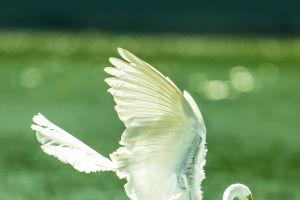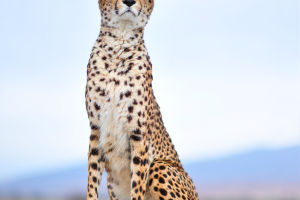Hummingbirds are a unique group of birds consisting of approximately 350 different species. All of these species are considered "New World" because they only occur in North and South America.
Hummingbirds are restricted to the Americas from south-central Alaska to Tierra del Fuego, including the Caribbean. Most species of hummingbirds occur in tropical and subtropical Central and South America, but some species also breed in temperate climates, and some of these species are even found in the Andes.
Hummingbirds, like other birds, do not have a well-developed olfactory system and rely primarily on vision. They obtain about 90 percent of their food from nectar, and the rest from arthropods, including flies, wasps, spiders, beetles, and ants. Their thin, long beaks are perfectly adapted for drinking nectar.
The smallest species of hummingbirds, such as the red hermit hummingbird and the honey-sucking hummingbird, weigh less than 2 grams, while the largest giant hummingbird weighs 19-21 grams.
Most other hummingbirds weigh between 2.5-6.5 grams and have a body length of 6-12 centimeters. Hummingbirds exhibit a wide variety of beak shapes, which can be used to identify the different flowers they eat. Hummingbirds also have extendable, forked tongues that allow them to suck nectar.
Despite their small size, hummingbirds are masters of flight. They can flap their wings 20 to 200 times per second and are able to move their wings horizontally, creating a constant buoyancy force that lifts their bodies. In this way, hummingbirds can move their bodies up, down, and even backward, simply by moving their tails.
Hovering flight allows hummingbirds to drink nectar because the delicate petals of flowers cannot support their weight. However, this method of flying consumes a significant amount of energy, and if a hummingbird stops consuming high-calorie food, it can only live for about two hours at most. Consequently, hummingbirds spend 90% of their flight time hovering over flowers to drink nectar.
In addition to drinking nectar, hummingbirds also eat insects and honeydew, and they peck at fruits and seeds with their beaks, although this is only a small part of their diet.
The breeding habits of hummingbirds are also fascinating. During the breeding season, male hummingbirds attract female hummingbirds by displaying their beautiful plumage and flying skills. Male hummingbirds nest in territories and provide food and protection for females.
Hummingbird nests are constructed using twigs, moss, and spider silk, and are typically located at the ends of twigs. The female hummingbird lays her eggs in the nest and takes care of the hatched eggs and chicks. The chicks stay in the nest for several weeks until they are able to fly out of the nest independently.
Hummingbirds play a vital role in nature as key vectors for flower pollination. When hummingbirds drink nectar, their bodies touch the pollen and spread it to other flowers, helping the flowers to pollinate. Therefore, hummingbirds are one of the most important pollinators for many plants.
Hummingbirds are unique and fascinating creatures that have adapted perfectly to their environments. Their mastery of flight, feeding habits, and role in pollination make them a vital part of the ecosystem. We should appreciate and protect these incredible birds for future generations to enjoy.


